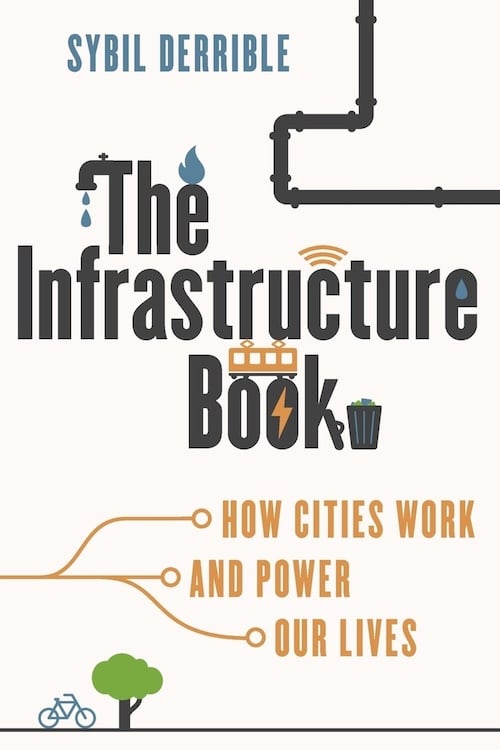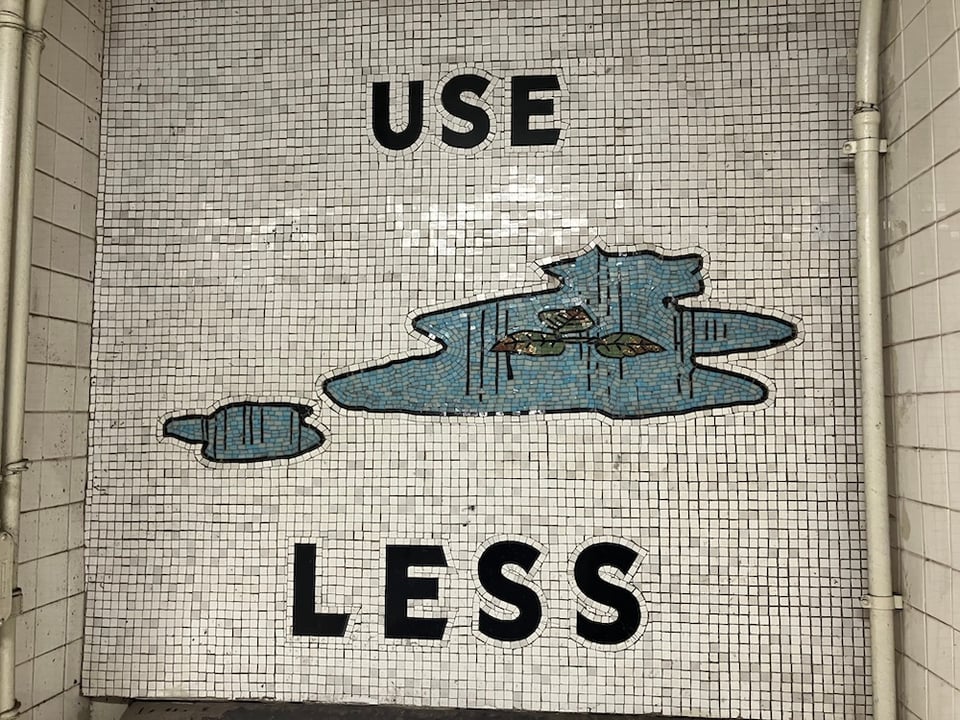In praise of infrastructure
Amidst the evils emanating daily from Silicon Valley, it’s nice to be reminded that some technology is actually good for us. Like infrastructure. This week on Techtonic I spoke with Sybil Derrible about his new book The Infrastructure Book: How Cities Work and Power Our Lives.
Listen to the interview: see the episode page or stream the show.

The book is full of case studies showing how cities around the world manage systems like water treatment, sewers, public transportation, energy, and telecommunications. Each is a critical service without which modern cities would be unlivable.
Infrastructure tends to work so effectively that we take it for granted. When we flip on a light switch, or run water from the tap, we don’t typically think about how these systems work. They just do. In that way, infrastructure often achieves the dream of digital user experience: an interface that just works and otherwise doesn’t get in the way of things.
Sybil Derrible argues that it’s well worth learning more about how these systems work – and maybe even getting involved in the decisionmaking processes that manage them. Public infrastructure, after all, is paid for by the public – by us – so we deserve a voice in how it’s built.
Walk outside in any city and you’ll see infrastructure. Or just fly into a city: as Derrible points out, there’s lots to see from the air, especially when you’re taking off or landing.
For example, the photo below shows clarifiers, which are circular pools for collecting and removing solids from water. They’re part of wastewater treatment plants, which are often located in the low-lying ground near airports – hence the ease of spotting them from a plane.

The Infrastructure Book concludes with a quote from the legendary urban activist Jane Jacobs:
Cities have the capability of providing something for everybody, only because, and only when, they are created by everybody.
The promise of infrastructure is that it can make life better for all citizens. A city only works when the lights come on, the water flows, and trash is picked up for everyone – not just a few privileged neighborhoods.
Contrast this with digital technology. Big Tech platforms enable, and even encourage, all sorts of deception, fraud, and exploitation targeting the vulnerable. (Read my column last week for an example of how Mark Zuckerberg’s chatbots exploit children.) Devoted to a “growth at any cost” ethos, Silicon Valley companies exploit the public while benefiting the tiny slice of owners and investors at the top. In other words, it’s the opposite of what we see in public infrastructure.
It stands to reason, then, that these companies do everything in their power to avoid paying taxes – the act of contributing to the infrastructure that benefits all citizens.
Big Tech companies are, however, perfectly willing to pay for infrastructure that they own and control. Here I’m thinking of undersea cables that carry most internet traffic between continents. Many of the cables are owned by four companies: Google, Amazon, Microsoft, and Facebook/Meta. (For spaceborne internet traffic, Elon Musk’s Starlink is the major player.)
These undersea cables represent infrastructure by billionaire, an approach that would be considered intolerable in any other context. Imagine if you had to rely on Mark Zuckerberg to get your tap water. Or as Christopher Mims put it awhile back, “Imagine if Amazon owned the roads on which it delivers packages.” The ownership of undersea cables – and, for that matter, low-earth satellites – represents an egregious concentration of power.
The case studies in Sybil’s book show a completely different way of handling infrastructure. Rather than rolling up profits to billionaires, projects for treating water and managing waste are typically planned by the state, with input from citizens, and paid for by taxes – very type of funding that Big Tech companies refuse to participate in.
I finished The Infrastructure Book with a renewed hope in our future, both offline and on. If communities around the world have managed to cooperate thus far, maintaining infrastructure for their collective good, there must be a way that we can do this online, too. There’s a future online for all of us, without the cancerous Big Tech giants. We just have to work together to get there.
(One way you can help is by joining Creative Good. This supports my work on this newsletter – and gives you access to our members-only Forum, where I post lots of other resources.)

BTW, a quick note: You’re on an unpaid subscription. Please upgrade your subscription to show your support.
Thanks,
-mark
Mark Hurst, founder, Creative Good
Email: mark@creativegood.com
Podcast/radio show: techtonic.fm
Follow me on Bluesky or Mastodon